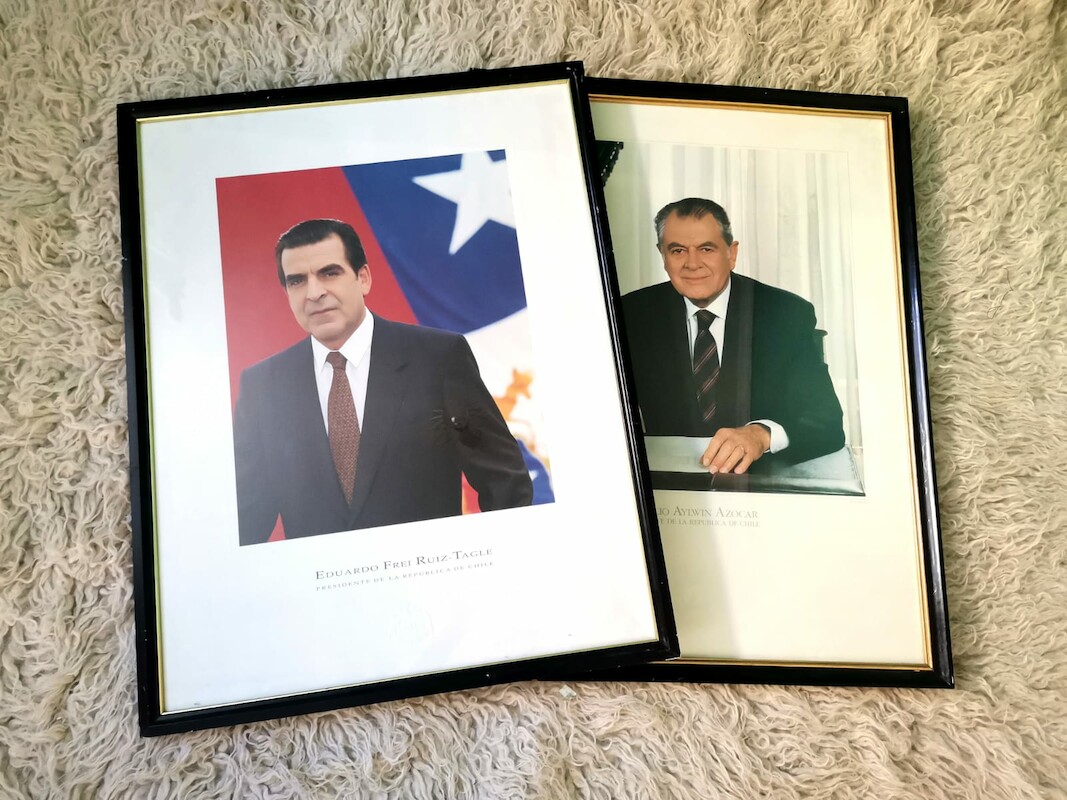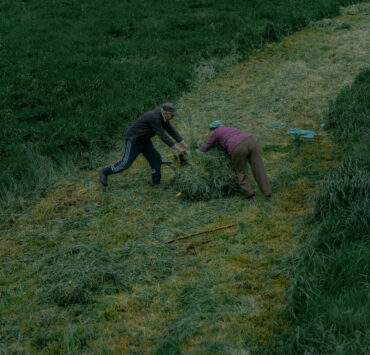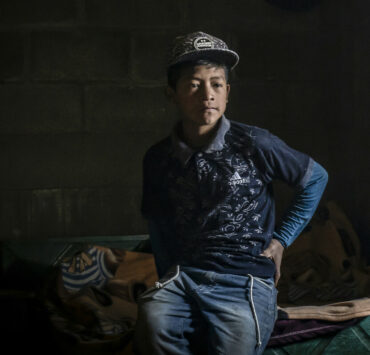Chile is a country where photography arrived early, practically less than a year after the publication of this invention in France; but the country did not react to it as something revolutionary, it was a curiosity like many more.
We must point out that in the mid-19th century public interest and popular distractions were on the side of hypnotism, the technical marvels brought by the advent of a second industrial revolution, recreational drug experimentation distributed by local drugstores, and also as a form of leisure, art and culture to which criollismo screwed its heminegligent gaze exclusively to what comes from the northern hemisphere. Sometimes we copy what is good, most of the time we copy what is bad and the rest we simply copy everything that could be “nor-foreign”.
One of the first references to an official photo in global presidencies comes from the United States, when the anti-slavery leader John Quincy Adams had his portrait photographed in 1843 in daguerreotype format. Adams himself is involved in the composition of this shot; Although it is not a presidential photograph with the purpose of being installed in all state departments as we know it today, it is a first gesture. Napoleon III would do something similar in 1854 when he had himself photographed by Nadar in a carte de visite format, which was reproducible ad nauseam and therefore an image that circulated.
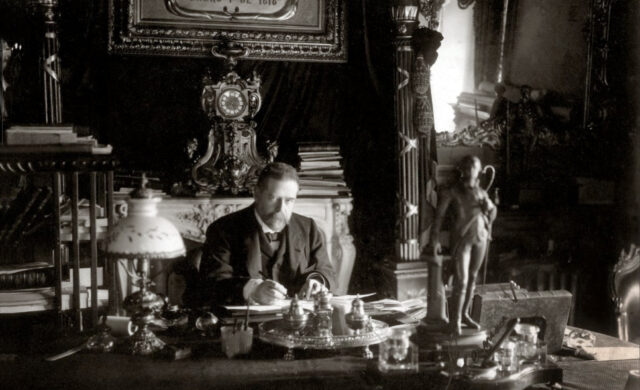
In Chile there are no major references to an official photo as such until 1906, when Pedro Montt assumed power through elections (previously the vice presidents of 1901 Anibal Zañartu and Germán Riesco had had their portraits taken by means of photography); what makes it official is the use and symbolism of the presidential sash inside the tuxedo jacket and with the shield in the middle of the chest. The photograph has a basic composition, figure and a background without details; the president looks to his left.
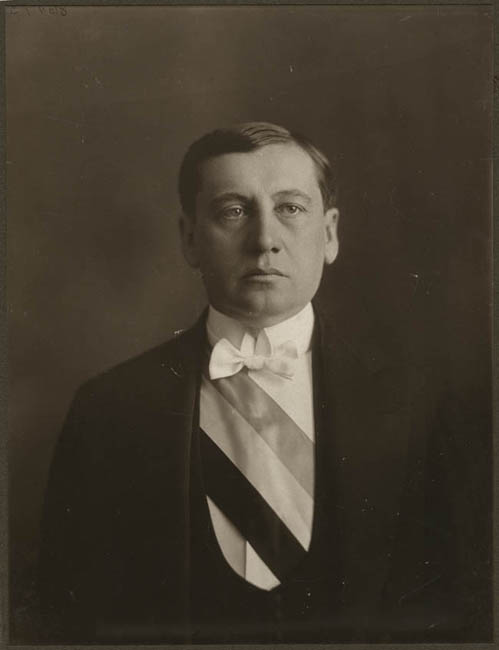
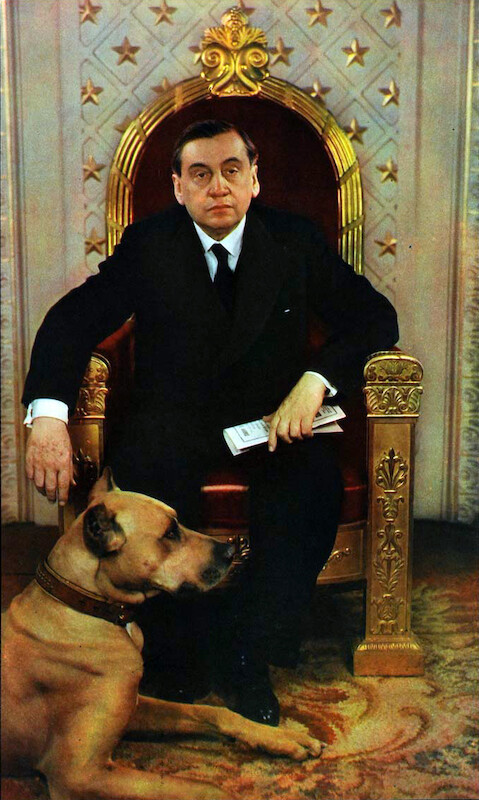
At that time, photography and pictorial portraiture were on parallel tracks. Official photography went through many moments and social and epistemological considerations. For example, the official photographic portrait of President Arturo Alessandri Palma never had the same impact and popularity as a casual photo taken with his dog Ulk; in addition to having one or the other symbology of Masonic lodges. It is from the work of Jorge Opazo Galindo (1908-1979) that the presidential photo becomes a “must” and the very ritual of having assumed power in practice and also on a symbolic level. He starts with Pedro Aguirre Cerda in 1938, going through another five consecutive presidencies until Frei Montalva’s in 1964. Opazo would be considered the photographer of presidents until 1970, coinciding with the arrival of the Unidad Popular and his definitive retirement.
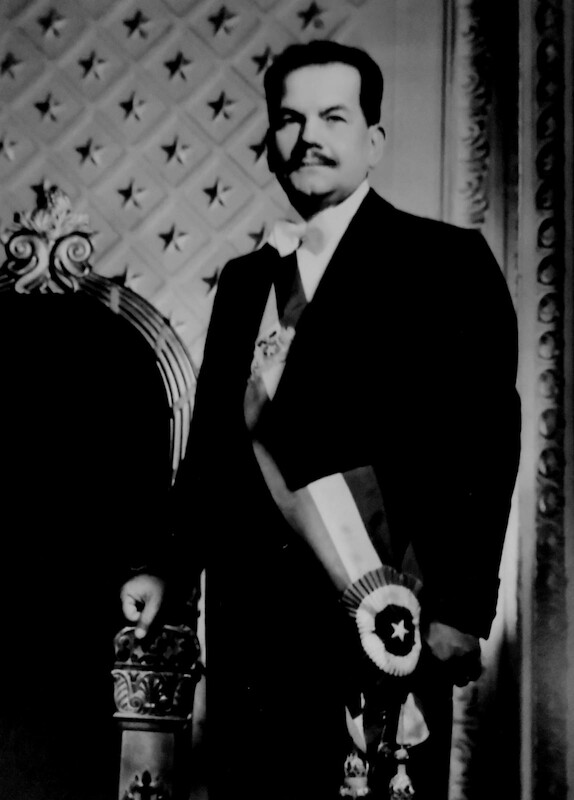
The photo of Pedro Aguirre Cerda sets up a scenario that would be the reference for five leaders for their official presence. Returning to the starry background used by Arturo Alessandri, which allows us to deduce that it was a session in the La Moneda Palace itself; the photographer Opazo adds the presence of the presidential chair where the sitter supports his left arm, the chosen angle is a low angle, implying that he is a great figure, someone superior; power is not suggested in the model or his posture, but in the photographer’s choices. Aguirre Cerda looks into the distance over the photographer/observer. The standing posture reveals an attitude of symbolic detachment from power (represented by the chair/throne), giving presidents an air of intellectuality and vision of the future that does not seek to settle eternally in power: that is the figure of a true statesman . The Hollywood style lighting plan is simple but very effective, a main lighting dedicated to the sitter that is softened, cut or contrast lighting for the background; The aim is to produce the so-called “Rembrandt triangle” on one of the cheekbones.
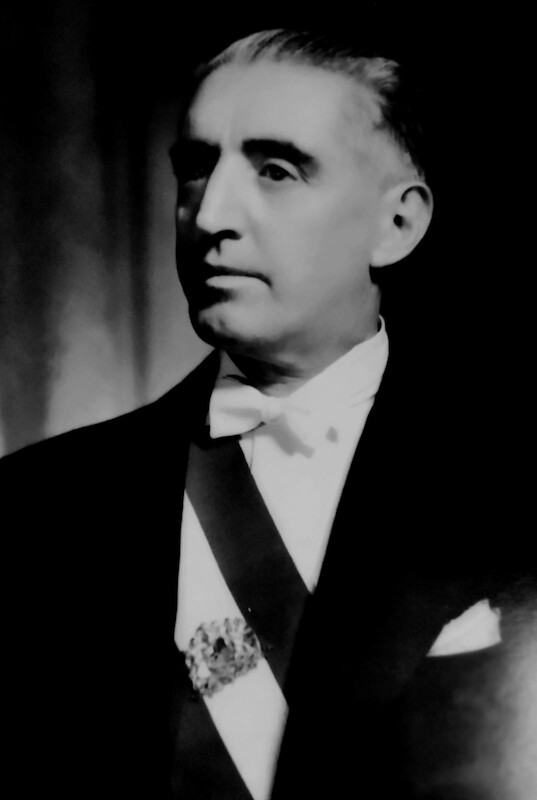
An image that will be quite different, even to this day, is that of President Juan Antonio Ríos, who chooses to show off his pale eyes in a close-up portrait (where Opazo’s mastery of lighting is evident, occupying a set of lights that highlight the eyes as if they were jewels with their own light). The presidential portrait of Gabriel Gonzalez Videla in 1948 returns to the stencil of the chair and a low angle that was used with Pedro Aguirre Cerda, the rose window (cockade) and the supposed piocha of O’Higgins that would disappear at the hands of Pinochet (fact captured on the broadcast of the change of command in 1990) are part of the session. In González Videla we see the repetition of Rembrandt’s lighting resource.
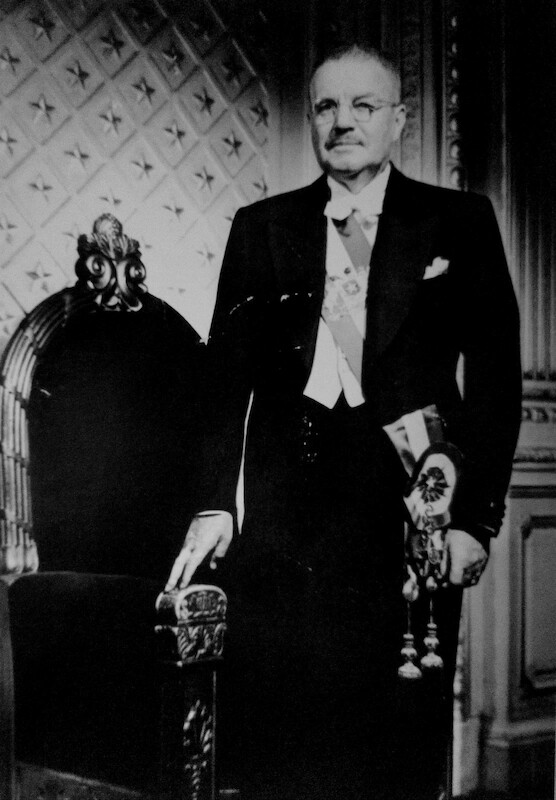
Carlos Ibañez del Campo in 1952, for his second presidential term, is another model with whom the opacean stencil is repeated.
A period closes with the session of Frei Montalva; It is equally austere but it does not reflect that sad solitary scene by Alessandri Rodríguez, nor does the armchair or any decoration that attracts attention appear. Frei does not rely on the power of the chair, but on the intellectuality and executive symbolism of the desk. Like other presidents, he also rests two fingers on the surface of the desk, it seems that his fingers recreate a triangle.
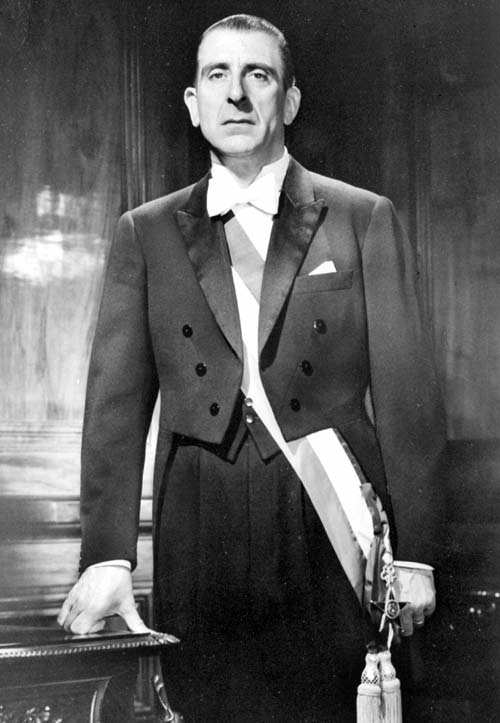
Although the passage of these six presidents are of different orientations and political moments, Opazo has always been associated with the presidential officialdom and the upper class of Chile, both those of greatest ancestry and those characters who sought to climb the social ladder by appearing in the social pages of the Zig-Zag magazine, which since the 1930s was the benchmark for these purposes.
With the arrival of Salvador Allende to the presidency and his tumultuous populism, the notion of an official photo is somewhat lost. He is one of the first presidents to have a team of permanent photographers such as Luis Orlando “Chico” Lagos Vásquez, chief photographer, Gabriel Amado, Guillermo Hidalgo, Hugo Pueller and the official Leopoldo Víctor Vargas (FACH official appointed to the government palace that he would end up almost by accident as a photographer). The end of his government would be tragic, and for this reason, in the unconscious those photographs that have to do with his last hours are more present than those that circulated in state agencies under the classification of “officials.” Two photos are counted in this function. One is a closed portrait (we were unable to find confirmation of his authorship) and another where he appears seated in the presidential chair but lacks the hieratic or symbolism expected from an official photograph; Allende is shown with his legs crossed, his socks are unexpected protagonists by reflecting the light of a direct flash, the appearance of the national symbols has no major incidence; it is an image product of the moment more than a planned session. This photo was captured -we assume improvised- by Leopoldo Vargas, a FACH officer who during the Popular Unity government was assigned to the La Moneda Palace, and who would end up compromised as a photographer since he would also be the author of the controversial and last Photograph of President Allende alive, moments before the Hawker Hunter bombing of the executive branch house. Between what is confirmed and what is not, what we can observe is that Allende installed the custom of wearing the presidential sash over his jacket until the current presidency.
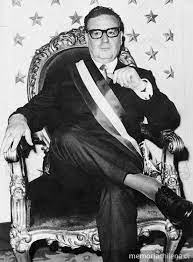
Pinochet’s arrival was not clear, not even for his henchmen on the Governing Board, who originally would rotate power until -supposedly- returning the administration of the country to a renewed political class or another administrative figure of consensus; but in the style of any self-respecting dictator, Pinochet kept power for himself. There are several photos of the general dressed as president, going by such bombastic titles as Supreme Head of the Nation to President of the Republic (which was not a title that corresponded to him since he was de facto). Here enters one of the “picturesque” of the dictator, who occupied a social image made by Opazo in his studio during 1973 to circulate it among friends and closest departments, however it was not recognized by the Board as the first authority if not many months later . We must mention that the photographer distanced himself from the authorship of those photos over time. Eventually Pinochet would take other photos integrating a series of symbols and postures that represented the power he wielded. Successively, the photos of the dictator gain accessories until they reach the baroque style of a photo that simply needs a large format to be able to appreciate the number of symbols staged that -in the egotic understanding- would promote him to the superlative patriot. Pinochet’s communication drive was such that even today it is not difficult to find official photos of him for sale on the internet, most of them associated with photoshops that perhaps would prefer not to appear on the back.
Pythonic symbols of democracy
With the agreed democracy of the 1990s, Patricio Aylwin’s photography once again displays a certain degree of austerity. Two official photos are circulated: one standing next to the Empire chair occupied by the presidents of what we will call Era Opazo, and there is another shot that is -personally- the one I remember seeing in public offices in which he appears signing a document on a desk. Emphasizing the executive part of his mandate, austerity is marked in two points; it is a mixture of the photograph of the falange’s mentor, former president Frei Montalva, occupying the desk as a stage (symbol of an executive project rather than illustrating a relationship of power), but the satin flag that Pinochet installed in image and unconscious is still present. In addition, these two photographs are taken within the same session (Aylwin wears the same tie in both shots). This image demonstrated the lack of willingness or concern to establish a visual break with the dictatorship and also -we must point out- that middle and senior managers inherited from the Pinochet administration continued to work in the Communications area of the La Moneda Palace, so possibly this session has been coordinated from these estates rather than being left to the criteria of one of the five photographers who officially worked for La Moneda during the Aylwin period; we are referring to Jesús Inostroza, Alejandro Mendoza, Ronald Arias,
Claudia Basaure, Patricio Salinas and Osvaldo Briceño as laboratory manager. This team was formed by former AFI Jorge Ianiszewski, who today is completely removed from politically engaged photography.
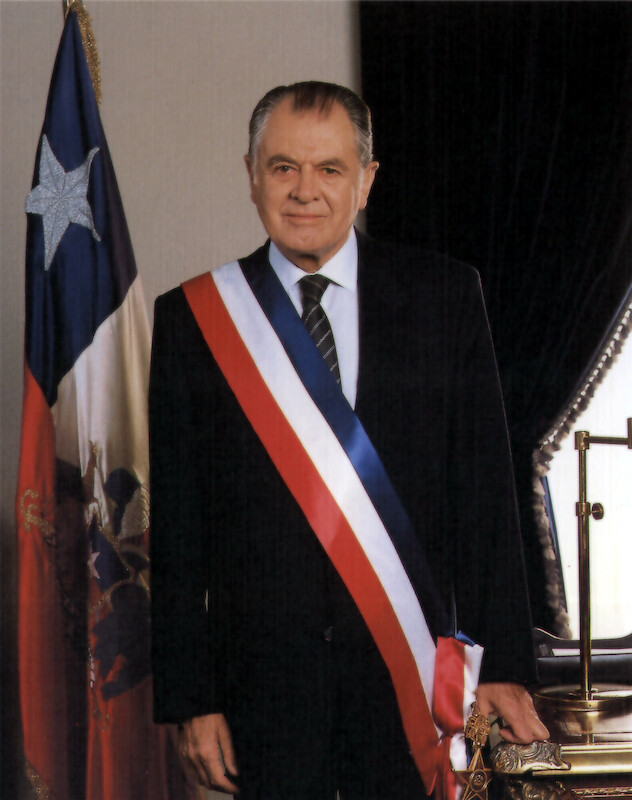
Frei Ruiz-Tagle’s photography would be carried out by the same team already mentioned, which shows some differences, where the frame is more closed, the background is the moving flag. Here a different aesthetic can be appreciated, which in the long run is a definitive cut with the Opacean influence in the official image. Opazo leaves, Photoshop enters. More than an official photo, it looks like a photo from an advertising campaign. Somehow -in the imagination- Frei was still campaigning, no longer touring the country but the world. He does not occupy the band, he is a global executive who served as president within his country. At this point I must mention that for this article we did not find Frei’s official photo in the most popular search engines, which confirms this shadow, the idea of the absent president even after a quarter of a century.
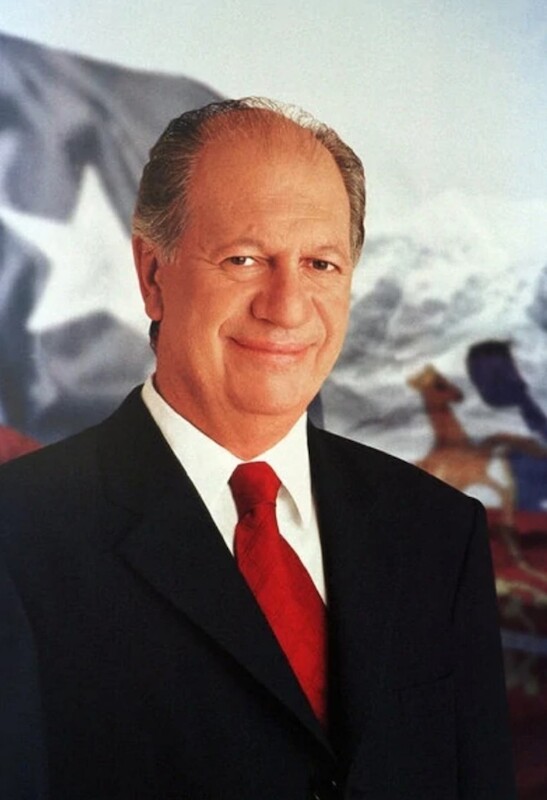
The official image of Ricardo Lagos repeats Frei’s maneuver, which clearly has advertising and not ritual as its reference. He doesn’t occupy the band either. The flag waving in the background intersects with the shield, the white gives the impression of a mountain range. His nose is oriented to the left, strangely and subtly his eyes do not look straight ahead, they seem to deviate to the right. Could this be a summary of his management?
The photos of Bachelet and Piñera seem to confuse us, they are a kind of castling, between them and their respective images. The so-called “Bachelet 1” government (2006-2010) chooses a photograph where the president wears an impeccable white suit with a mandarin collar, the background is blue; the photo of “Bachelet 2” (2014-2018) is the negative: white background and blue jacket, also with a mandarin collar. The flag does not appear in either of the two, the maximum patriotic symbol is the gaze.
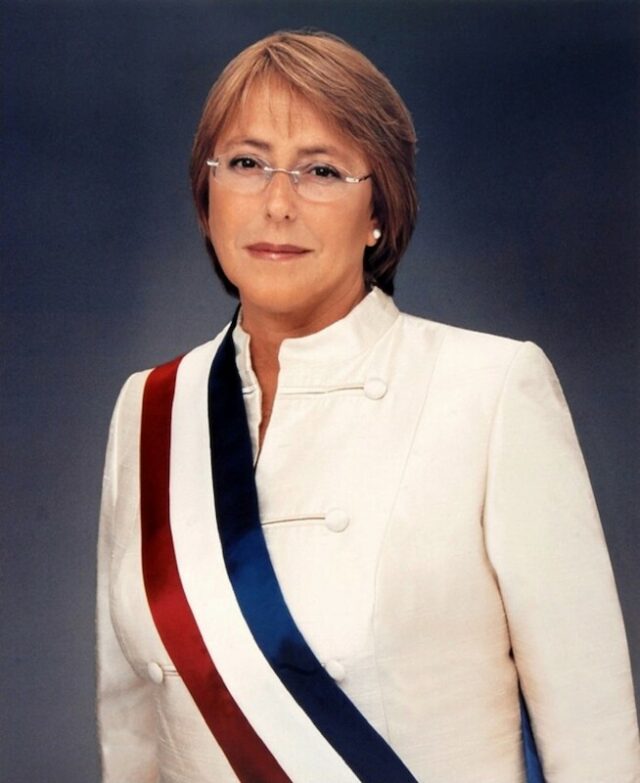
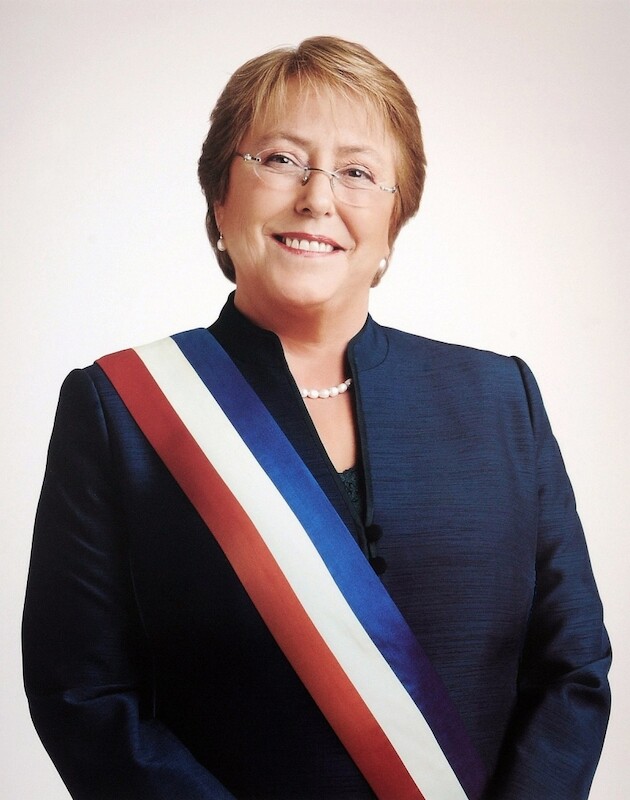
The visual administration of Piñera 1 (2010-2014) opts for a closed plane and shallow depth of field, a background of gardens in bokeh can be appreciated.
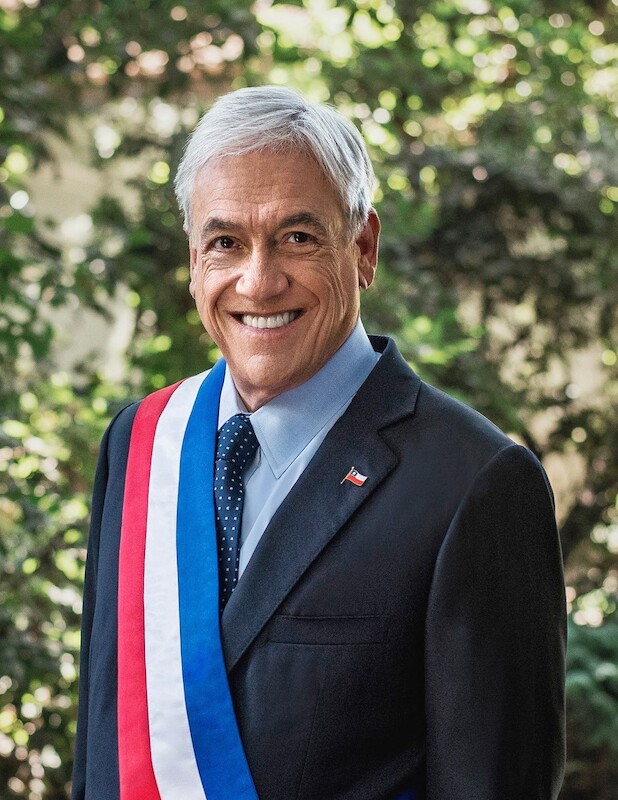
It stands out for its veracity, so to speak. Apparently there is no significant use of Photoshop and the president seems like a gentleman who is the preferred subject by the Fotocine Club: the ontological truth of excess wrinkles. The (visual) honesty is appreciated, but this image becomes strange when compared to that of Piñera 2 (2018-2022), where he appears younger. An active adult who seems to be posing for the corporate image of airlines since the background is a somewhat chopped view over the Andes mountains, the same view that we could appreciate from an airplane hatch.
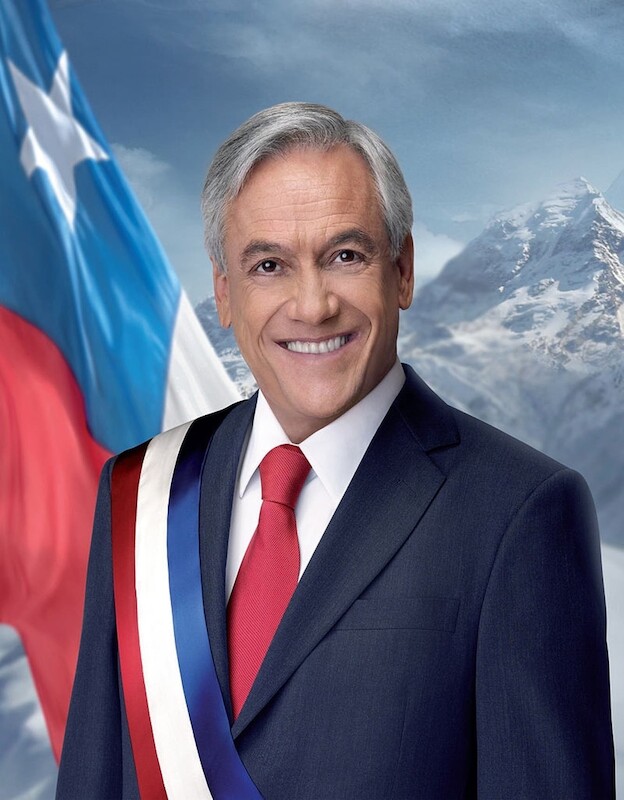
Let’s remember that the ownership of airlines were the media shadow of the president and businessman. A detail to consider: Piñera is the first president to appear smiling broadly in his official photo, showing his teeth, an occurrence that Bachelet will borrow for her second term photo.
The young president and the experts in practice
The main strategy of all opposition to the government is to re-over-interpret the figures, seeking to blame the present for the chain of negative situations that are dragging on. The other opposition strategy has always been to caricature. It has been said that youth does not have the experience to govern or, in the absence of finding a physical defect (so ingrained in old generations of Chilean men and women) to ridicule, it has been decided to look for a nickname brought from abroad as a nickname, that of hake (Merluzo) that comes from the opinion from outside of a Spanish presenter. This gesture speaks so much and so badly about the average Chilean and it would not be appropriate to mention it in a text that seeks to arrive at a kind of dissertation. The indicators to which the government, its departments, advisers and experts tend, have read the present or a very close past, it seems that there was no further advice, but the most remarkable thing is that the official photo does not pass only by the criteria of the photographer, like the president and his partner finding him more or less handsome, there are several more layers of revision. Has the official photo scroll been reviewed?
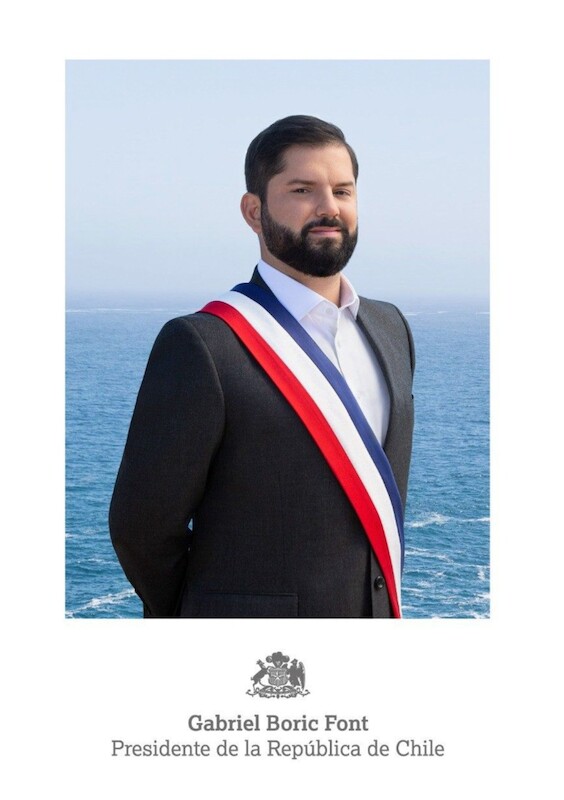
At the time it was said that he was the first president without a tie, but that is not relevant. There are elements that go in and out, but there are symbols that affect or -if we see it from the most playful point of view- cast the fate of what that management will look like later on.
Without further ado, I ask myself the following, no longer from a photographic point of view placed on the balance of symbolism, I am going to that interpretation of the visual impact that it arouses in the ordinary citizen and the exegete, all at the same time, knowing that an economic crisis was coming: who could think of taking an official photograph in which the president literally has “the water around his neck” and with a partly cloudy landscape lurking in the background?
We must point out that having occupied the swell was not knowingly that he would be the victim of the nickname “Merluzo”, because between the fact that he was branded as such and the official photographic session, they were practically synchronous events of the same March 11, 2022.
In view and considering all of the above, in a personal capacity, without compromising the medium where I publish, I dare to point out that we have an official caricature of what a presidency can be. The mistake was not made by the photographer who took it, technically her work is neat; the mistake lies in the chain of advisers who saw photography as an aesthetic product, conceptually supported by the gender quota, and not as a symbol that affects the reality; something that the presidents of the Masonic wing already had much clearer in the thirties. What hurts as a Chilean is that the presidential image turned out to be a caricature made behind closed doors. Let’s see at the end of the current administration to what degree the photographic oracle is fulfilled this time.
Images and sources: – Jorge Opazo, Retrato, Imagen y Poder. Margarita Alvarado et al. Editorial Pehuén. 2007.
memoriachilena.gob.cl/602/w3-article-128295.html
About Jorge Villa:
Jorge Villa Moreno (Illapel, 1978). Graduated in art and photographer, he has worked with the most relevant cultural institutions in Chile, with which he has also developed the work of popularizing photography, organizing talks, conducting research and mainly raising awareness through mediation about the cultural heritage of photography.
He has carried out various samples of his work, highlighting his pioneering emphasis, such as in 2014 holding the first national exhibition exclusively from his cell phone camera, set up in the city of Quilpué, Valparaíso region. Also in 2017, he held a photography workshop for children in the first school cycle called “Free and Happy Photography” which was exhibited at the then Council for Culture and the Arts, and was featured on the official Twitter account of the presidency. He is editor and mediator of “La Ruta de Sergio Larraín por Valparaíso” and his emblematic project “Fotomérides”, (both on Facebook). Currently, his management goes hand in hand with the rise of the photobook during the pandemic, organizing a cycle of talks -still ongoing- at the Ministry of Culture, Arts and Heritage; In parallel, he is managing the creation of a photo library and permanent photography collection at the Daniel De la Vega Cultural Center in the city of Quilpué. Jorge Villa Moreno has obtained scholarships and competitive funds on several occasions.
Websites:

